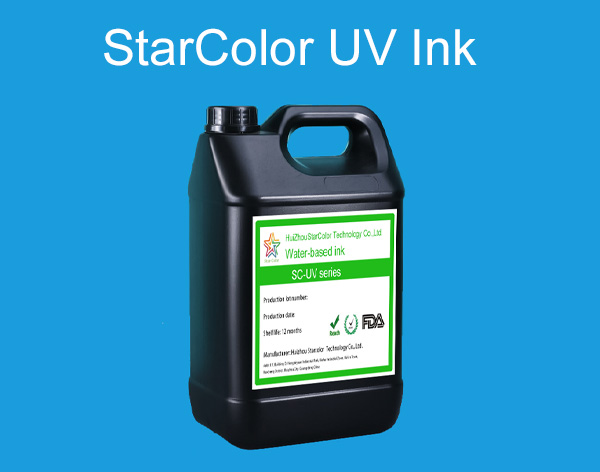UV flexographic ink is an environmentally friendly ink widely used in label printing, packaging printing, and other fields. It achieves rapid curing through ultraviolet light exposure, boasting high efficiency, energy saving, and environmental protection. This article will provide a detailed analysis of the formulation composition and functions of UV flexographic ink.
I. Main Components and Their Functions
Prepolymer
Unsaturated Polyester: Low price, fast curing, high toughness, but low gloss, poor resistance, prone to emulsification.
Polyester Acrylate: Lower price, easy to adjust ink properties, good overall performance, but poor chemical resistance, prone to emulsification.
Polyether Acrylate: High adhesion, good gloss, good flexibility, but poor resistance, prone to emulsification.
Epoxy Acrylate: Low price, fast curing, good adhesion, high gloss, but poor flexibility, prone to emulsification.
Polyurethane Acrylate: Tough and wear-resistant, excellent overall performance, but high price, high viscosity.
Role: The prepolymer serves as the binder and primary film-forming material in UV flexographic ink, determining key properties such as the ink's curing speed, gloss, adhesion, and wear and resistance.
Types: Mainly include unsaturated polyesters, acrylic resins (such as polyester acrylates, polyether acrylates, epoxy acrylates, polyurethane acrylates), etc.
Performance Comparison:
Reactive Diluent
Role: Has dual functions of curing crosslinking and solvent dilution, adjusting the viscosity of the ink and ensuring the curing and drying speed.
Types: Mainly include monofunctional compounds (such as styrene) and bifunctional or multifunctional compounds (such as acrylates of polyols).
Photoinitiator
Carbonyl Compounds (such as benzoin, benzophenone): Mainly absorb light with a wavelength of 360~420nm.
Azo Compounds (such as azobisisobutyronitrile): Mainly absorb light with a wavelength of 340~400nm.
Organic Sulfur Compounds (such as thiol): Mainly absorb light with a wavelength of 280~400nm.
Others: Such as halogen compounds, sensitizing dyes, organometallic compounds, etc.
Role: Decomposes under ultraviolet light to produce radicals, initiating polymerization reactions and increasing the drying speed of the ink.
Types:
Pigment
Role: Provides the color of the ink and affects the rheological properties of the ink and the gloss of the printed film.
Types: Commonly used color pigments include diazosulfamide yellow, hansa yellow, phthalocyanine blue, phthalocyanine green, permanent red, etc.; achromatic pigments include titanium dioxide, high-pigment carbon black, etc.
Filler
Role: Increases the solid content, improves the rheological properties of the ink, and reduces costs.
Types: Commonly used fillers include calcium carbonate, aluminum hydroxide, silicon dioxide, talc, kaolin, etc.

II. Auxiliary Agents and Their Functions
Polymerization Inhibitor
Role: Prevents crosslinking of the ink during storage, improving the storage stability of the ink.
Common Types: Hydroquinone, p-methoxyphenol, p-benzoquinone, etc.
Defoamer
Role: Eliminates bubbles generated during the manufacturing and use of the ink, mainly for low-viscosity thin ink varieties.
Common Types: Silicone oils (such as F810, FN), silicone acrylates (such as R2500), etc.
Leveling Agent
Role: Improves the leveling properties of the ink layer, reduces pinholes in the printed film, and enhances the printing gloss.
Common Types: Silicone acrylates (such as R2100, R2200), silicones (such as Deqian 457), etc.
Impact Resistant Agent
Role: Used in inks for metal coil printing to enhance the ink's resistance to pressure processing.
Common Types: (Meth)acrylic phosphates (such as DAY-18, PM-2, DAY-0211, SR9008), etc.
Dispersant
Role: Enables good dispersion of the pigment in the ink, shortens grinding time, reduces the oil absorption of the pigment, and prevents aggregation and sedimentation of pigment particles.
Wax
Role: Changes the rheology of the ink, improves water resistance, reduces problems such as smudging and paper lint pulling, and forms a smooth wax film on the surface of the dried ink film, enhancing wear resistance.
III. Formulation Example
The following is an example of a typical UV-LED flexographic ink formulation:
Pigment (magenta): 5%
Prepolymer (hyperbranched polyester acrylate): 40%
Monomer (hexanediol diacrylate): 45%
Photoinitiator (819): 7%
Additives (dispersant + leveling agent): 3% (ratio of dispersant to leveling agent is 1:1)
This formulation results in an ink with a viscosity of 89.3 mPa·s, a color strength of 1.48, a curing time of 0.5s, and good printing suitability.
IV. Conclusion
The formulation of UV flexographic ink is complex, with each component functioning synergistically to determine the printing properties and curing effects of the ink. By reasonably selecting the components and their proportions, inks with low viscosity, high curing speed, and good printing suitability can be prepared to meet various printing needs.